Courses & Activities
All posts
Warm Weather Photography Trips: May-August
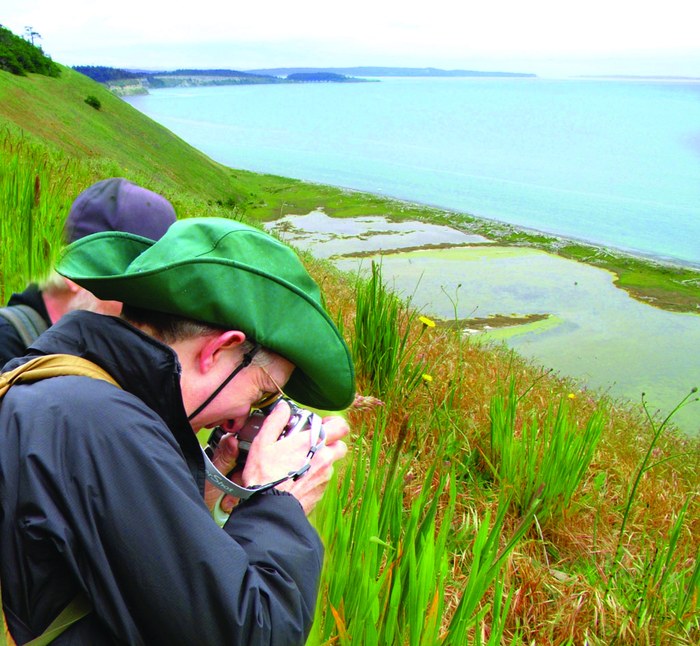
Do you like to explore our state and take photos of the places and things you find? Join the Seattle Mountaineers Photography Committee during warmer weather as we explore and photograph places that are either new to us or have been forgotten. Read more…
How To: Manage the Risks of River/Creek Crossings
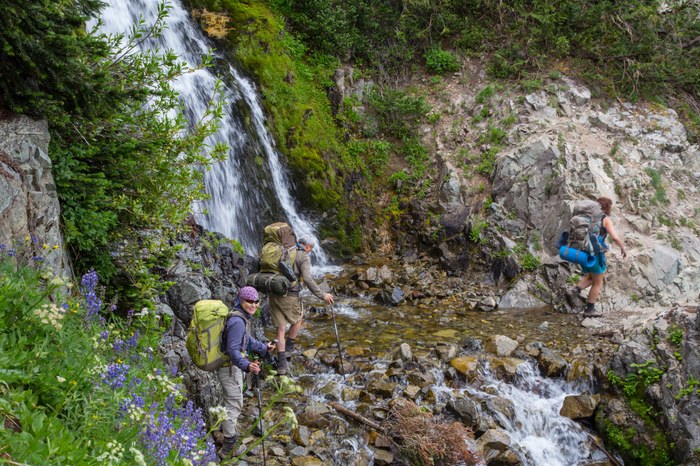
As the weather gets warmer and winter snow melts away, more of us are heading outside. And as the snow melts, it leaves us with a sometimes a challenging obstacle: water. In the Cascades, it doesn't matter if you are a hiker, scrambler, or climber, eventually you'll have to deal with a water crossing. It could be a small trickle or a rushing river. It's not a matter of if, but when, you'll encounter this obstacle.
This article was updated in May 2018.
Historical Perspective
A few years ago, a Mountaineers group was headed to climb Sahale Peak. The team was crossing a small drainage in the area between Midas and Morning Star Creek - two of the main creeks that flow out of the Quien Sabe Glacier below Sahale - when one of the climbers slipped and hit her face on the rock in the creek. This caused a small laceration, just under the right eye, and swelling around the area, as well as a headache, slight dizziness, and swelling. The trip leader decided to cancel the climb and turn around at this time. The group headed back to the cars and the injured climber was taken to the hospital for medical evaluation. Luckily, she sustained no fractures or head injury, but she did have a nasty black eye.
This incident shows how something seemingly simple, like crossing a small trickle of water, can be detrimental to the success of a trip.
Avoiding Hazards
Many different hazards are involved in water crossings: slippery, moss covered rocks, swift currents, soggy boots, and cold feet. If you do fall in, you have soaked clothing and gear, the risk of hypothermia, potential projectiles in the water like logs and boulders, and much more.
Here are some tips to reduce your chances of ending up soaked and needing to cancel the rest of your trip:
- Never try to cross a major stream if you are alone. It only takes 2" of water to drown. The climber in the incident above could have easily been knocked unconscious, and if there was no one to help her up, it could have been a different outcome.
- Quickly search both upstream and downstream for a way to cross without having to ford the water. Look for downed logs, closely spaced stones and boulders, or narrow points in the waterway. Be sure to keep in mind the ability and experience levels of everyone in your group.
If you find possible logs or stepping stones, consider:
- Will it hold you? If you are considering a log, is it strong enough to hold your weight as you cross, or is it rotten and will break once you are half-way out? Is it wide enough to get good foot placements? Are there branches sticking up in your way? If you are considering stones, are they sturdy and solid, or are they going to shift under your weight and dump you in the water?
- What is the surface like? Does that log have rough, textured bark that will give you good traction, or is the bark peeled away showing damp, slick hardwood? If you are unsure of the footing, but the log seems strong enough, one alternative is to butt-scooch along the log. Are those stepping stones covered in slick moss, or do they have good texture?
- Be particularly cautious of log jams. They might seem like a solid option, but the logs can easily shift and throw you off balance and into the water. Now you are in even bigger danger of getting caught underwater by one of the logs.
Regardless of how you have to cross - whether it be logs, stepping stones, or just fording the water - take a minute to look downstream of your crossing point and examine the hazards you could encounter if you fall in. Is there a large waterfall you could get swept over? Maybe a downed tree or log jam that you could get caught in or some large boulders you could hit. If anything like this poses a danger, re-evaluate your crossing point.
Picking the best spot
If your only option is to ford the water, follow these steps:
- Look for the shallowest, slowest running section. This is usually also a wider section of the waterway.
- Assess the water's speed by tossing in sticks, leaves, or grass into the water. If there is debris actively floating down the water (evidence of flooding) or the sound of tumbling rocks can be heard underwater (evidence of fast-moving water), the crossing should be abandoned.
- Keep in mind the the physical stature of other people in your group. Two feet of water could be less than knee-deep if you are 6'6" tall. But it could be mid-thigh deep for someone under 5' tall, and that makes it much more challenging.
- Look at the bank on the other side. Avoid steep banks as this not only indicates a challenge exiting the water, but that steepness could continue dramatically down and create a deep hole with fast-moving water.
- If possible, plan to cross early in the morning. Many of the waterways in the Cascades are directly fed by snow-melt. After a cool night, there won't be as much melting and the water level will be lower. On the flipside, after a long, hot summer day (or even a warm spring rain) there will have been a lot of melting and all that water will be rushing through the streams at a higher overall level that afternoon, making them both deeper and faster flowing.
Staying Dry & Avoiding Injuries
Once you've chosen your place to ford the water, follow these tips to stay dry and avoid injuries:
- If you have sandals with an ankle strap (like Chacos or Tevas) change into those. Avoid flip-flops as the loose heels can get caught in the current and make you lose your balance.
- If you don't have alternate footwear, at least take your socks off and put your bare feet back in your boots. That way, you can put your dry socks back on after crossing and they can start to absorb some of that water in your boots.
- Do not cross in just your bare feet. Unknown hazards in the water, like sharp sticks, rocks, possibly even fishhooks, could injure you. Your bare feet are a poor substitute for the traction provided by the soles of your boots.
- Take off extra layers and pack them in the most water-proof thing you have. I always carry one or two extra heavy-duty trashbags in my pack. Take that warm puffy off and wrap it up the best you can. You'll want it once you get to the other side! Roll up your pant-legs, or ditch your pants altogether.
- Undo your waist-belt and sternum straps on your backpack and loosen your shoulder straps. If you do fall in, this will allow you to easily get your pack off.
Crossing Methods
- If you are crossing the water one at a time, use your trekking poles, ice axe, or downed tree limbs for stabilization.
- Cautiously enter the water and face upstream. If you only have one pole or limb to help you, hold it with both hands in front of you (upstream) to form a tripod with it and your legs. Lean on the pole as third leg as you shuffle-step across, keeping two points of contact at all times. If you have two poles or limbs, you can use the one in your leading hand to probe along the way and feel for submerged obstacles or hidden holes.
- Another method is to cross as a group using the "mutual support method." There are two options for this - in the first option, everyone should face upstream and hold on to the shoulders or backpack of the person in front of them (front person can have a pole or limb). As a group, shuffle step across the water, using each other for support and stability.
- Another option is for everyone to face the opposite bank and move together as a unit. In this method, keep the waist-belt of your backpack buckled. Insert your arms between your neighbors' back and their pack, and grab their waist-belt on the opposite hip. In both scenarios, the most upstream person should be strong, then the second person should be the strongest and/or most experienced. The person on the other end should also be strong, and then all other members sandwiched in the middle. End people can also have poles for extra stability. Don't break formation until everyone is out of the water.
Regardless of which method you use, don't fight the current or try to go straight across the water. Instead, with each step move diagonally downstream as you make your way across.
If you do fall in, try to stand back up as quick as possible before your backpack gets too waterlogged. If you are swept downstream, get out of your pack but try to keep hold of it and use it for flotation. Try to position yourself face up with your feet downstream of you. Only try to stand up once you can touch the bottom in shallow water. Editor's Note: Be aware of the dangers of foot entrapment anytime you stand up in moving water.
Once you've made it across, wring out your damp clothes and use a pack towel to dry off as much as you can. If available, switch into dry clothes. Put on an extra insulating layer to help keep in what little body heat you have. Pop a quick bite of food in your mouth and start hiking to generate some more warmth.
Take every water crossing seriously. Always ask yourself, "Do we need to cross? Where do we cross? How do we cross?" Even with all of these tips, be sure to keep in mind that if there is any doubt, not crossing at all is the best option.
Slots still available for Beginning Hiking and Backpacking Seminars!
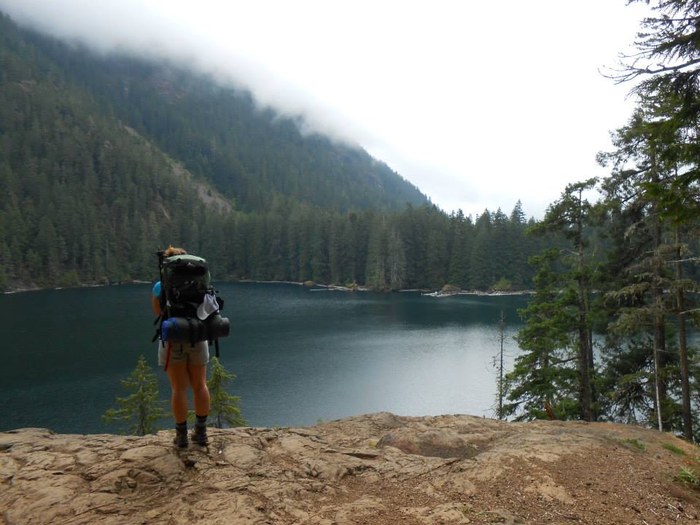
Whether you are first time hiker or more experienced backpacker looking for advanced tips from our experienced group of leaders, we've got something for you. Check out our Beginning Backpacking, Intro to Hiking, and Lightweight Backpacking Seminars! We've got two seminars happening in Seattle and one in Tacoma at the end of next week! Read more…
Volunteers Needed: Course Posting Support

If you have time to volunteer with us via computer, you could help all of your fellow volunteers by posting courses on Mountaineers.org. When you provide this support, our volunteers will have more time to focus on curriculum and teaching techniques, which will ultimately benefit all of the students and instructors involved in the course. Read more…
Free Sailing for Beginners - Raft Up Party + Sailing Course
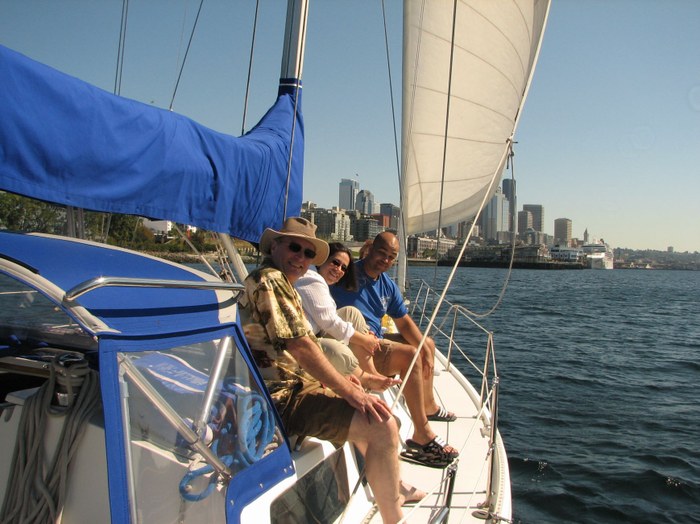
Spring has sprung and it's time to get out on the water. Join The Mountaineers for our sailing kick-off event March 26. Then sign up for one of our two sailing course and attend free sailing trips with The Mountaineers for LIFE! Read more…
How to: Reduce a Dislocated Shoulder
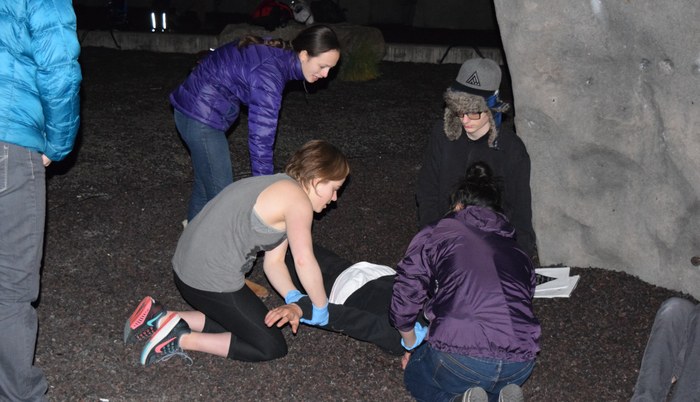
As I skimmed through the latest Annual Safety Report looking for ideas for this month's article, I noticed The Mountaineers had 5 instances of dislocated shoulders in 2014. This got me thinking about all of my friends who have had shoulder dislocations while out in the backcountry. Read more…
Charles Crenchaw: The First African-American to climb Denali
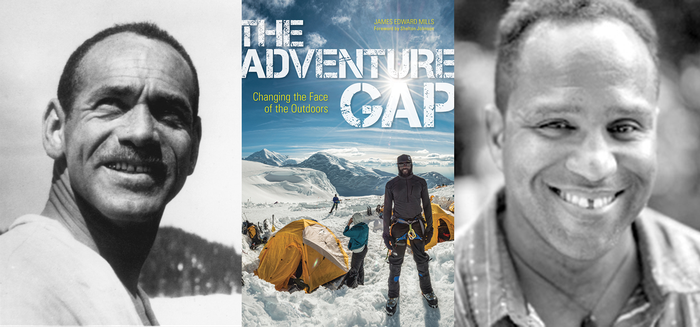
Charles Crenchaw, the first African-American to summit Denali on July 9, 1964, climbed the peak as a member of a Mountaineers trip. His story is one of many told in the book The Adventure Gap: Changing the Face of the Outdoors by journalist James Edward Mills, excerpted here. Read more…
"Twelve Long Walks" with Cam 'Swami' Honan - April 16
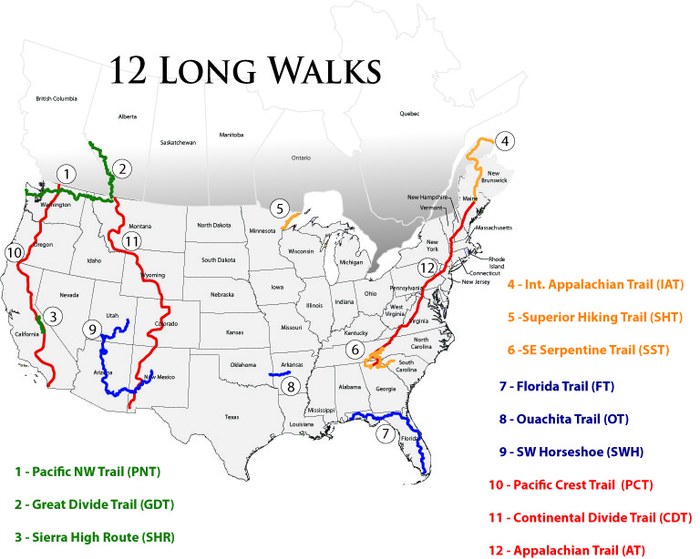
Over 545 days between July 2, 2011 and December 28, 2012, Australian adventurer Cam "Swami" Honan completed an amazing - almost superhuman - feat: through-hiking 12 of the most iconic long trails in 29 US states and 4 Canadian provinces. In the process, he set records for the most miles hiked in a calendar year (10,204 in 2012), the fastest completion of a calendar-year Triple Crown (PCT, CDT and AT in 236 days), and the most dehydrated beans consumed in an 18 month period (123.7 lbs)! Read more…
Online Wilderness Navigation Course open for registration
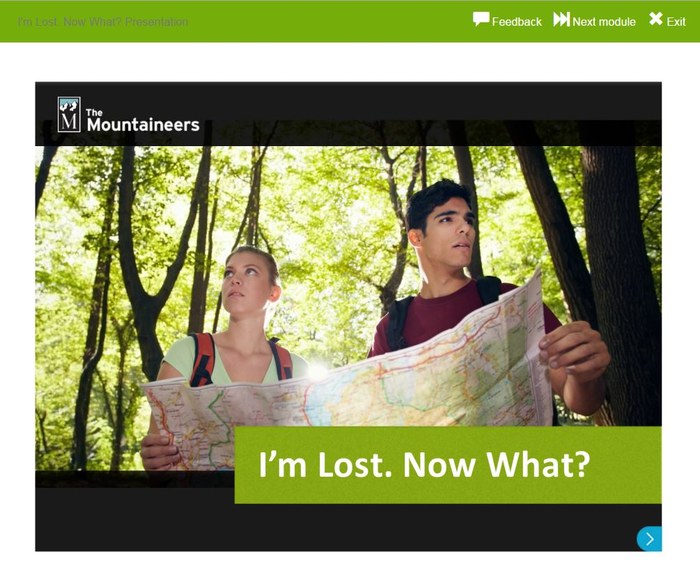
The Mountaineers is now accepting students for its first online course: Wilderness Navigation. The course, offered in partnership by the Seattle and Foothills branches, is part of a pilot project to discover how the organization can serve students who prefer online learning or for those who don't live close to where an in-person workshop is offered. Read more…
BeWild Speaker Series 2016

The Mountaineers, Mountaineers Books, and adidas outdoor are pleased to present the 2016 BeWild Speaker Series, putting passion and adventure at center stage! This year, we're presenting adventurers who've achieved great things and overcome huge challenges through the outdoors. Come to any one of these talks - or all four - and we guarantee you'll leave inspired to seek adventure, connect with nature, and work to protect the wild places we cherish. Read more…
Now Offering Wilderness First Responder Courses and Recerts
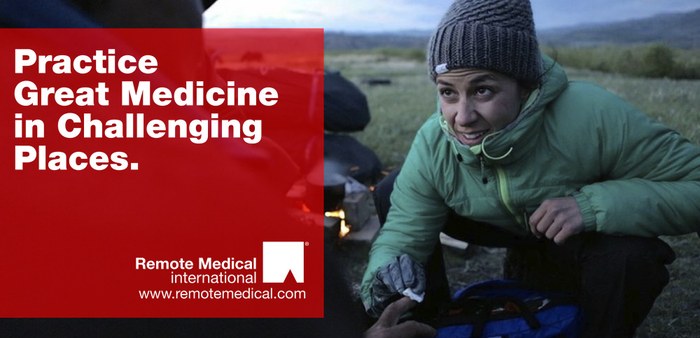
Starting in Spring 2016, The Mountaineers will be offering Wilderness First Responder and Wilderness First Responder Recertification courses! Read more…
Shining in all Seasons with Mountaineer Naturalists
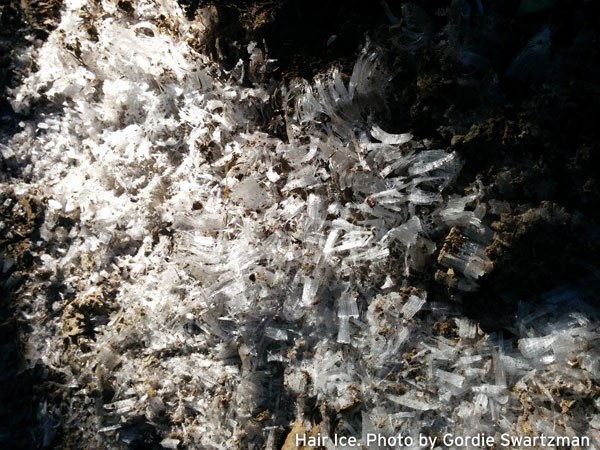
We all know about the therapeutic value of spending time in nature - but nobody practices it better than Mountaineers. Read more…
2016 Photography Courses
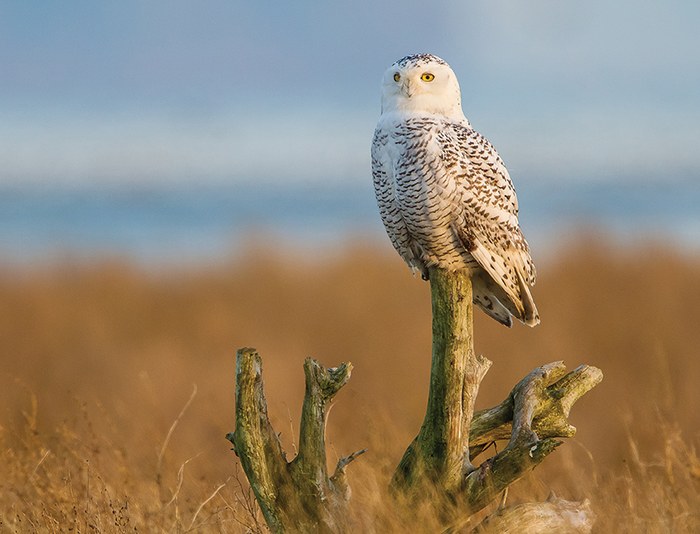
The Photography Committee has been holding a basic photography course for many decades, changing with technology as necessary. Because of these advancements, we have made the course shorter, splitting it into two class types and focus on digital cameras. These courses are now offered three to four times each year instead of once a year. Read more…
Photography Committee Potluck & Photo Presentation - March 16
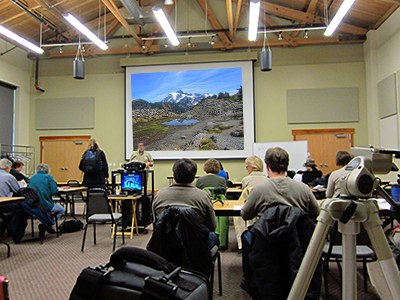
Did you know that the Photography Committee holds monthly potlucks where members showcase their photos? It's a great way to see what other members have been doing while giving ideas of places to go to enjoy to enjoy the great outdoors. Read more…
Blake Herrington: Cascades Rock - March 22
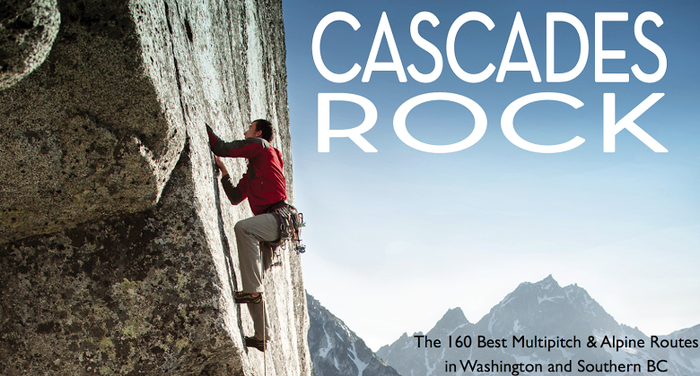
We're excited to welcome local climber and author Blake Herrington to Washington's cadre of self-published guidebook authors! You've seen his work in Alpinist, Climbing, and Rock & Ice magazines as well as numerous websites and newspapers. And he's just completed a new guidebook, Cascades Rock: The 160 Best Multipitch & Alpine Routes in Washington and Southern BC. Join us on March 22 as he presents his new guidebook at the Seattle Program Center. Read more…
Tacoma Branch Open House + Gear Grab - Feb 18
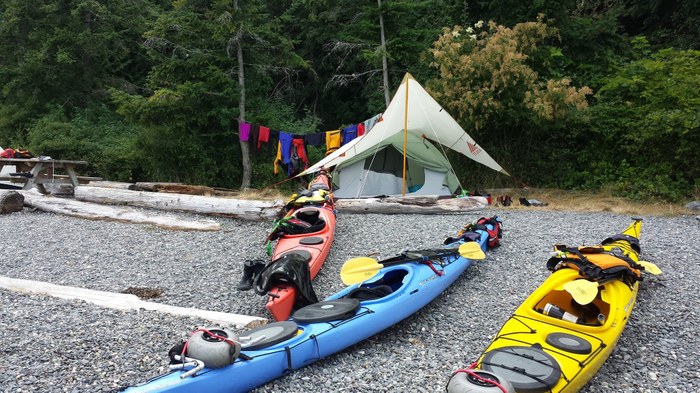
At this action-packed evening, you can check our our Gear Grab, meet fellow Mountaineers and learn how to get involved in our courses and activities, and enjoy great stories and pictures from Tacoma Mountaineer Beth Owen on her 8-day kayak adventure around the beautiful San Juan Islands. Read more…
Snow Spelunk - Cave Explorations on Mount Hood
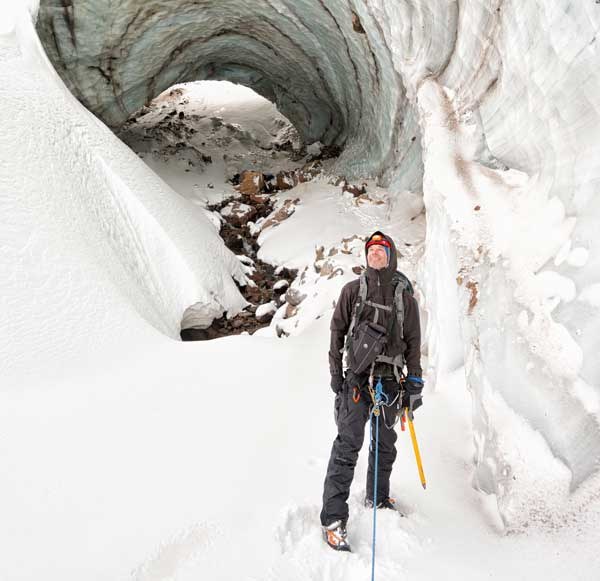
As he stood at the mouth of Pure Imagination, a newly discovered ice cave on Mt. Hood’s Sandy Glacier, Tyler Jursain felt apprehension. “I don’t even know if we’re welcome here,” he thought, glancing to his partners Dave Perez and Erik Chelstad. They had been planning this trip for months, and now he stood feet from the final destination. Read more…
Black Diamond Runner and Carabiner Recall

Although no safety incidents have been reported, Black Diamond has issued a voluntary recall for a number of their carabiners and nylon runners.
The inspection procedure is on the Black Diamond site and they are offering new product free of charge if the gear does not pass the inspection. Read more…
Gene's Quest for 100 Peaks at Mount Rainier
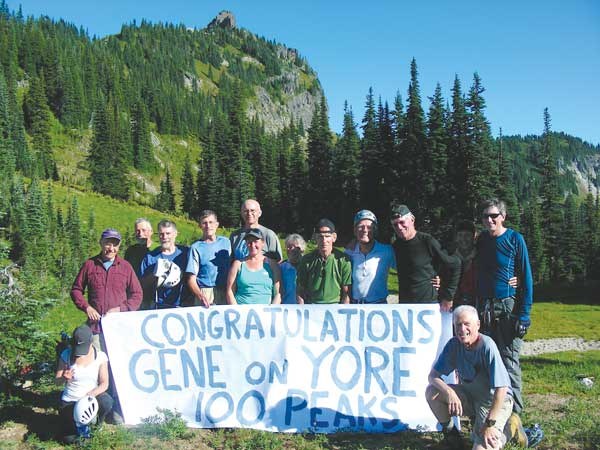
Of all the Wilderness areas in Washington State, Mount Rainier is by far the most iconic. It was the fifth national park established in the United States — back in 1899. Millions flock there every year to hike, ski, snowshoe, climb or simply take photos. Those who love the outdoors love any excuse to spend more time in this beautiful park. Read more…
Navigation, First Aid, and Conditioning Classes for Hikers and Backpackers!
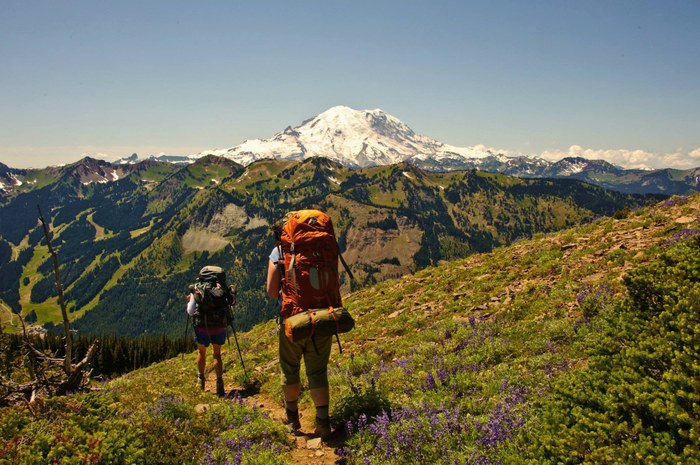
We've been hearing from many hikers and backpackers who want to learn navigation and field first aid/emergency-response skills, but aren't ready to invest the time and expense for the full Wilderness First Aid or Navigation course. Others really want to get strong and in shape for the trail season but would like some professional guidance to design a tailored conditioning program. To help, our volunteers from the Foothills branch have developed clinics tailored for hikers and backpackers from all walks of life. Read more…
How To: Care For Your Sleeping Bag
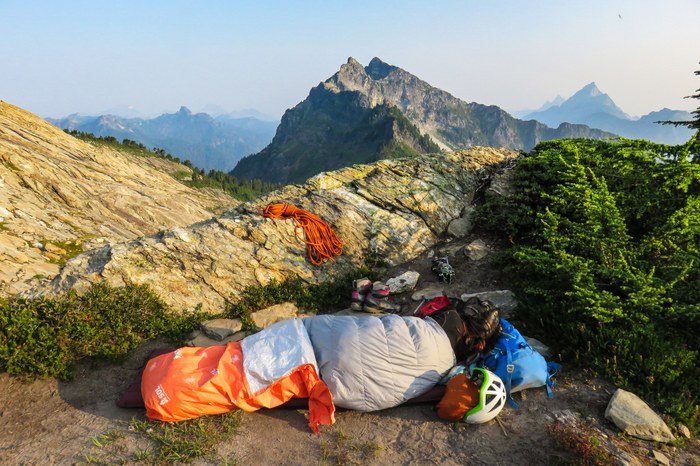
It’s that time of year when I like to take inventory of my backpacking gear and find the chores I put off during the busier hiking months. Remember that small tear in your tent mesh you ignored or the clogged water filter you put off cleaning? Like me, you probably forgot about those issues when you stuffed your gear away last fall and will only remember them when you are already in the wilderness on your first trip. If these simple tasks are left unattended, they can become major annoyances or worse, require expensive replacements. Read more…
Happy Birthday, Fred Beckey!
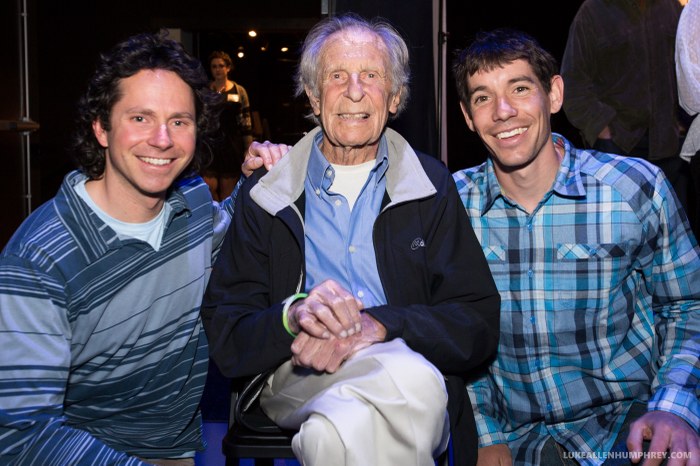
Fred Beckey, a living legend among Northwest Mountaineers, is a climber, environmentalist, historian, and author. He has achieved enduring recognition as the most imaginative, persistent, and thorough explorer and mountain investigator of the Cascade Range Wilderness. Last year we celebrated Fred as the recipient the of 2015 Mountaineers Lifetime Achievement Award at our BREAKTHROUGH dinner and auction featuring Fred, Colin Haley, Mike Gauthier, and Alex Honnold. Read more…
Tech Update 2.5 - Seminars & Clinics, Search, Youth
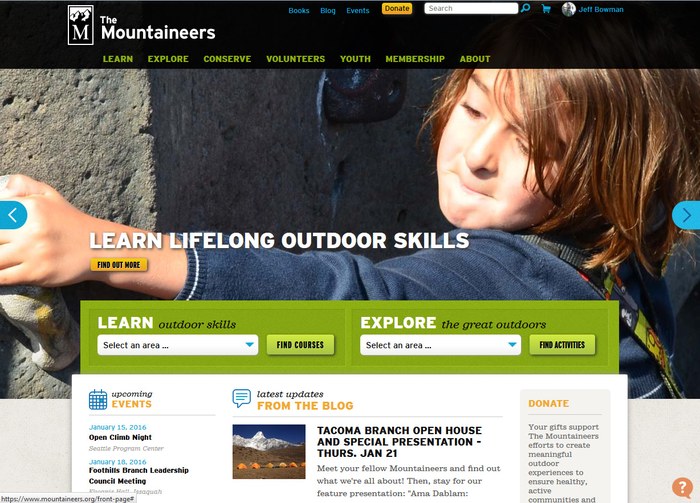
Our minions were busy late last year into the early days of 2016 to give us mountaineers.org 2.5, including improvements for seminars & clinics and site-wide search, and new features for our youth programs. Read more…
How To: Pick an Altimeter
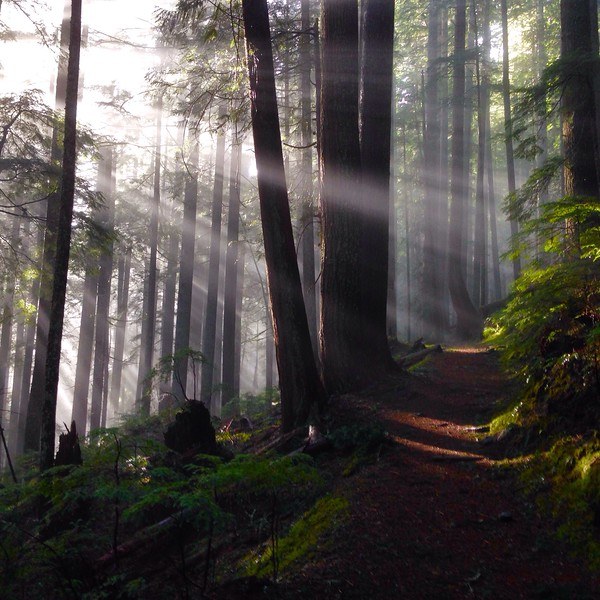
Early altimeters with 19 jewels and Swiss-made movements were price-prohibitive and thus weren’t included in either The Mountaineers navigation courses or the Ten Essentials. However, with new technology emerging, the upcoming 9th edition of Freedom of the Hills will feature map, compass, and all of the modern tools with altimeters prominent among them. Read more…
Tacoma Branch Open House and Special Presentation - Thurs. Jan 21
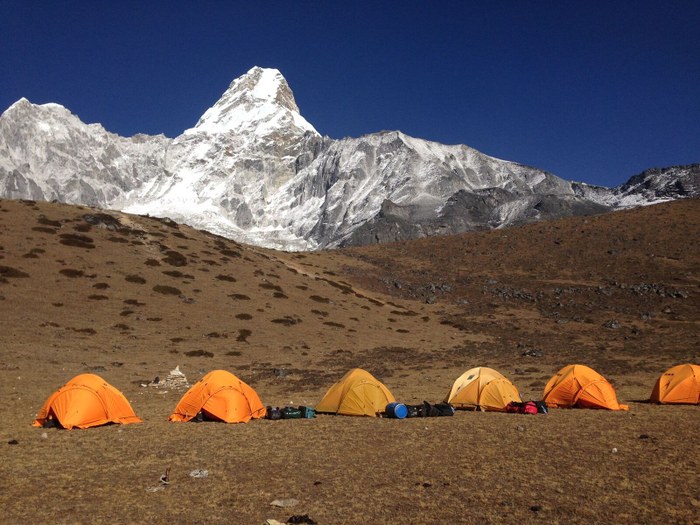
This past November, Tacoma Mountaineer Carrie Kavanaugh traveled to Nepal to climb Ama Dablam, an impressive and beautiful peak that caught her eye on her first expedition to the Himalaya in 2009. Read more…
Become a hike or backpack leader for the Mountaineers!
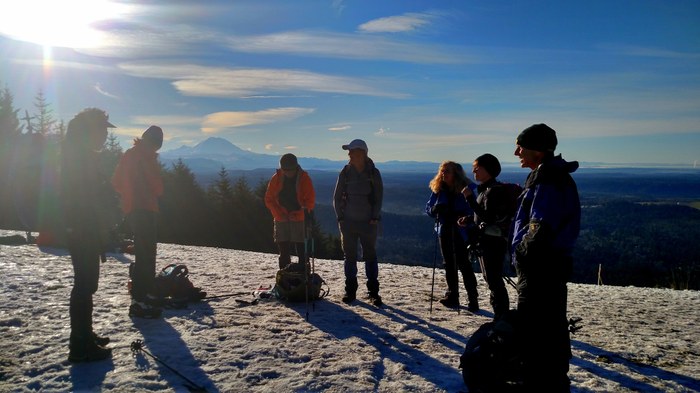
My own Mountaineers leadership story started with a search for trail companions. I was seeking a compatible group on the types of hikes and backpacks that interested me. Then, one day, I took a new arrival from China on his first hike, and I saw the joy and wonder blossom on his face when Mount Rainier emerged in all her glory behind a ridge covered with meadow wildflowers. That was it, I was hooked. Read more…
Backcountry Film Festival - Jan 7, 9, and Feb 4
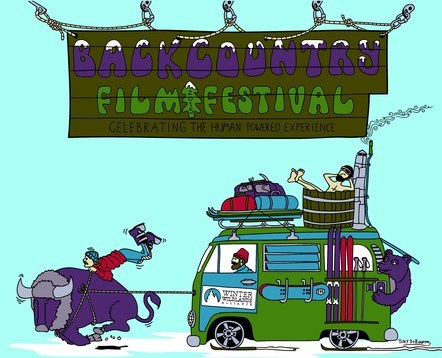
Grab your outdoor bucket list and adventure buddies to tune into a night of human-powered winter celebration, with ten edge-of-your-seat films celebrating backcountry skiing and other adventures! Read more…
We did it! 100,000 human-powered miles!
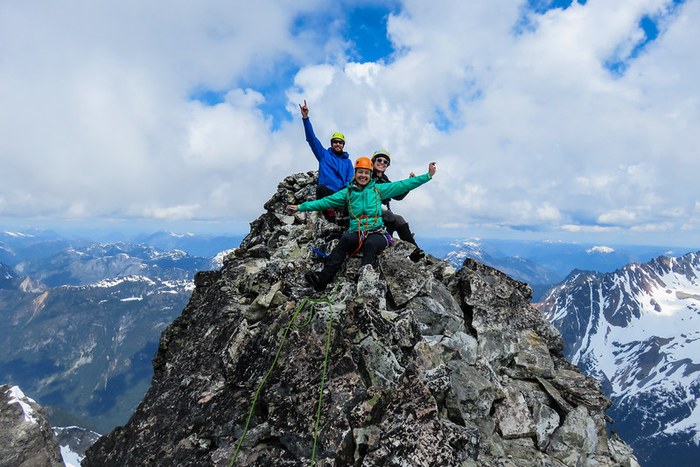
As an organization, The Mountaineers just reached a huge milestone. Our members - through their collective trips - just reached the 100,000 mile mark for the year - the weekend before Christmas (our members registered about 800 miles on Mountaineers.org on 12/19 and 12/20)! That’s a lot of human-powered adventuring in 2015! This includes 30 MILLION feet of elevation gain over all of our different activities. Read more…
"Wilderness Navigation Workshop" to be Offered Online in February
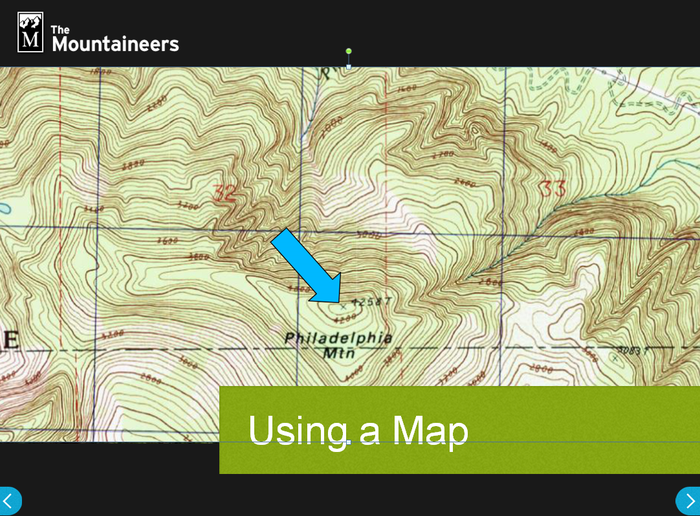
Early in 2015, The Mountaineers Board of Directors identified two big goals for the organization -- re-examining it's rich and broad array of outdoor education and piloting some of it in an online format. The online pilot is in development and will be offered by several branches in the first part of 2016. Read more…
How To: Know When Your Fuel Canister Is Empty
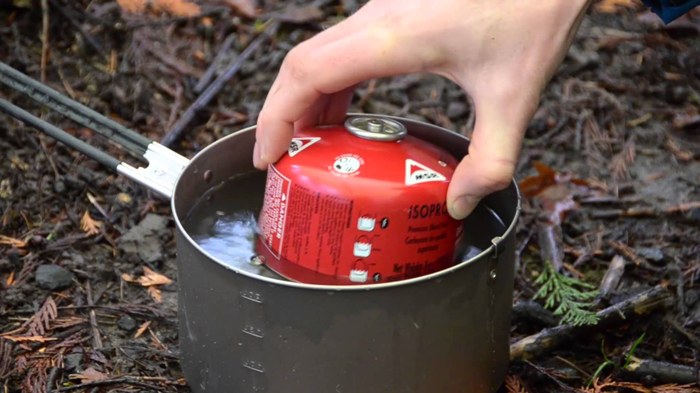
Ever wonder how much fuel is left in a used canister? In this short, instructional clip, MSR shows how to measure MSR canister fuel. Read more…